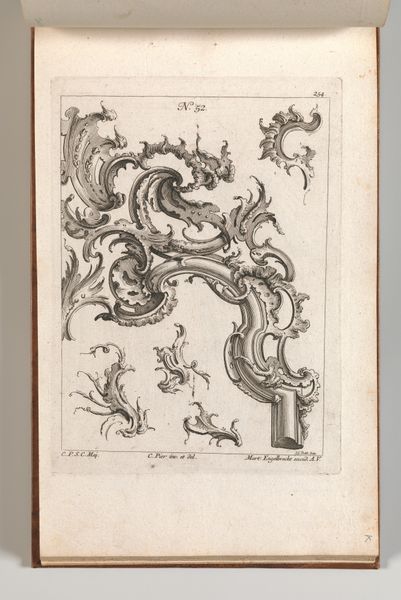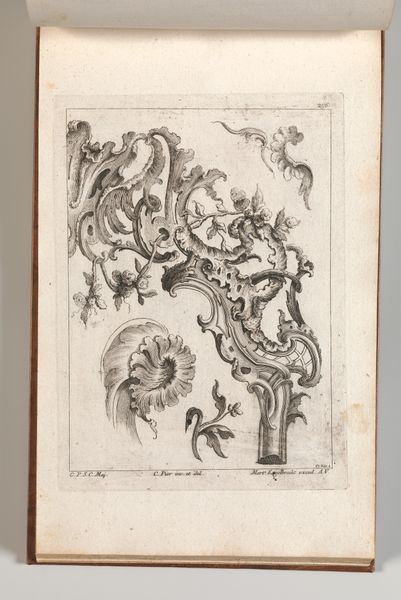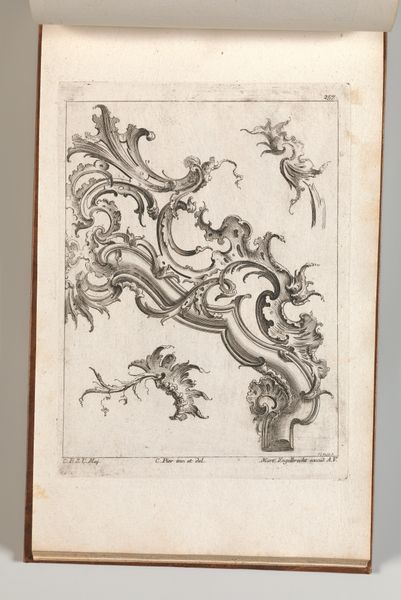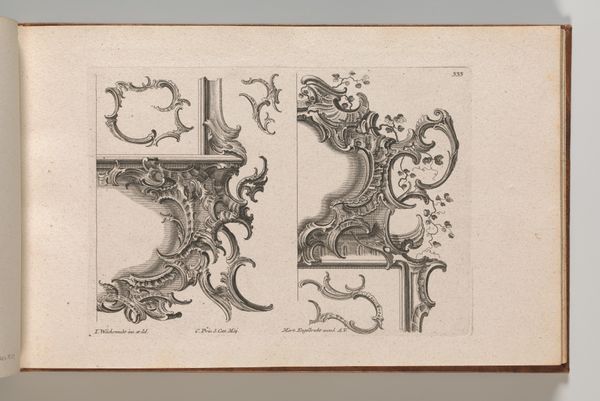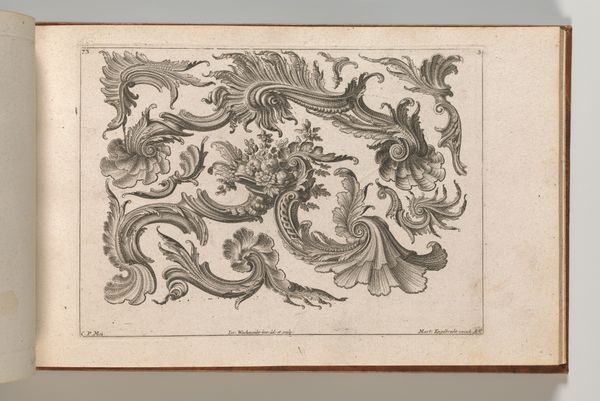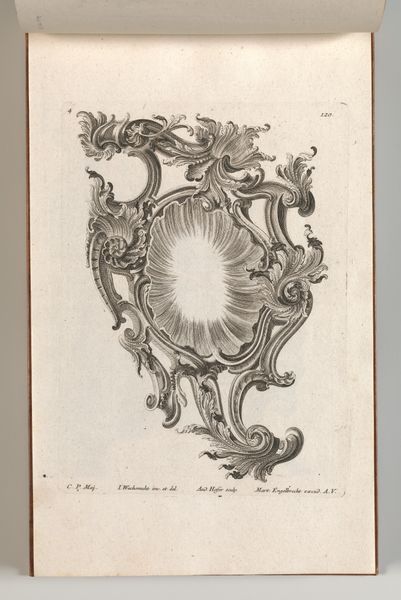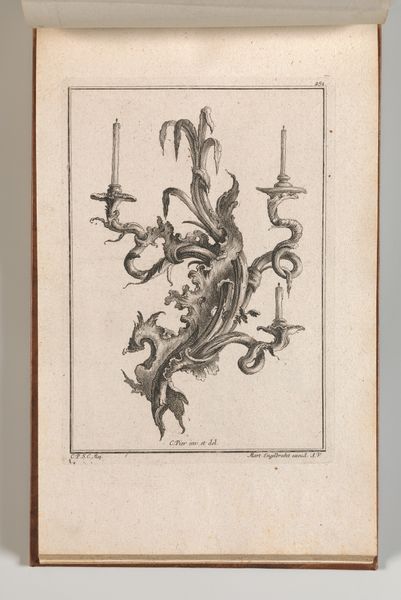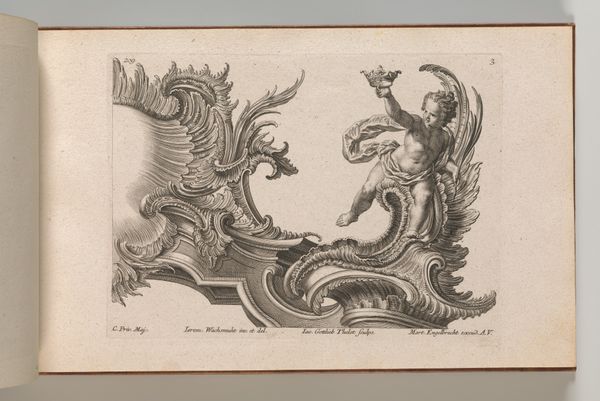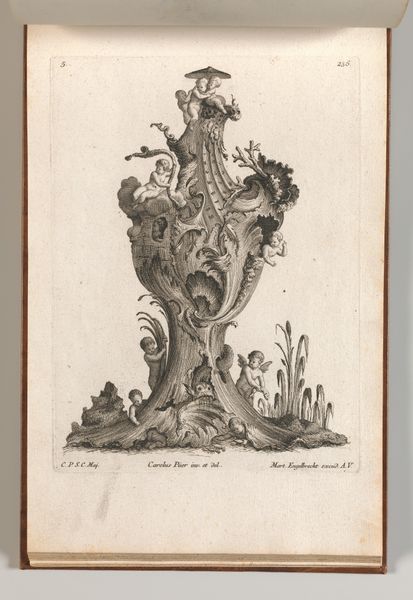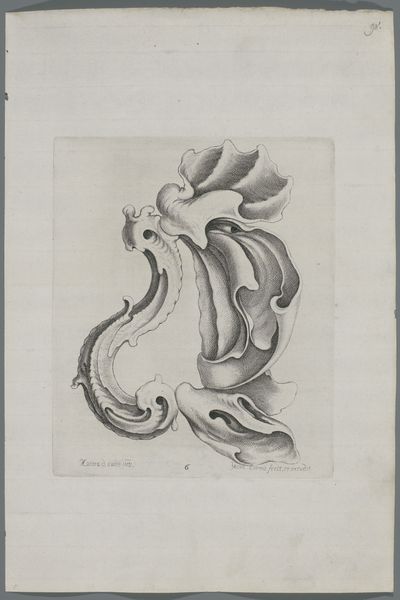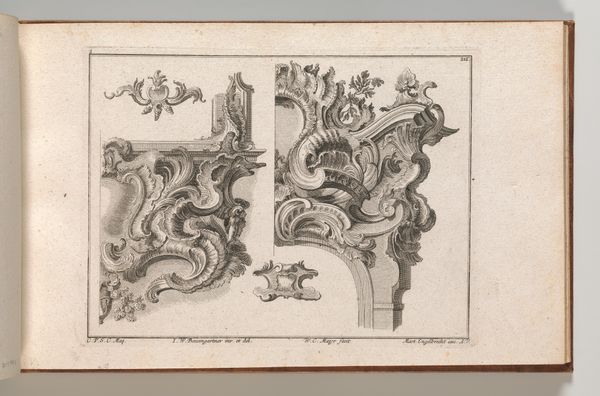
Various Designs for Rocaille Ornaments, Plate 2 from an Untitled Series of Rocaille Ornaments for Frames 1745 - 1755
0:00
0:00
drawing, ornament, print, etching, engraving
#
drawing
#
ornament
# print
#
etching
#
engraving
#
rococo
Dimensions: Overall: 8 7/16 × 13 3/4 in. (21.5 × 35 cm)
Copyright: Public Domain
Curator: At first glance, I see exuberant, swirling forms—a real explosion of embellishment. Editor: Indeed! What you're seeing is Jacob Gottlieb Thelot's "Various Designs for Rocaille Ornaments, Plate 2 from an Untitled Series of Rocaille Ornaments for Frames," created sometime between 1745 and 1755. It's an etching and engraving, a study of rocaille ornamentation. Curator: The rocaille motif—derived from shells and rocks—feels like such a defining element of the Rococo. I’m immediately thinking about the culture of aristocratic excess it represented, the embrace of the fanciful and the artificial at the French court and across Europe. Editor: Absolutely. Beyond just mere opulence, these designs speak volumes about the era’s ambitions. Ornamentation in the Rococo was about displaying one’s sophistication. Look closely and you’ll notice how the patterns borrow organic forms from nature – stylized leaves, water droplets. These would have been laden with cultural significance, signaling power and learnedness. Curator: It’s remarkable how the Thelot translated these ornate elements to print. Each line conveys light and shadow, enhancing the three-dimensionality. One could easily imagine these elements adorning a grand salon, a mirror frame, or even furniture. How would an artist adapt these kinds of prints? Editor: I believe this plate would have served a primarily didactic function for other artists and craftsmen. Through their forms, they conveyed the sensibilities and the values of an era keen to establish aesthetic dominance. In the political landscape of 18th century, arts become weapons for displaying national prowess, reflecting aspirations, political structures, and commercial intentions. Curator: I’d agree—there's definitely an element of standardization. Now when I consider these decorative prints, I cannot help but imagine the workshops producing luxury items. This rocaille design shows not only artistry, but also reflects labor organization and market economy back then. Editor: And that brings the art to life. To look at design, to read into symbolism is really an invitation to see continuities. Curator: Yes, thinking about how tastes, political ambitions, and artistic skill coalesce, we better understand the 18th century and beyond.
Comments
No comments
Be the first to comment and join the conversation on the ultimate creative platform.
